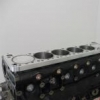Nytsky's Engine Build
Announcements
-
Similar Content
-
Latest Posts
-
Howdy all Im in a little predicament and wondering what everyone’s thoughts are? I’ve had my long block rebuilt and am in the market for a turbo due to my old one having metal shavings from crank bearings (cause of rebuild) go throughout the turbos oil lines and there wheel has a little play. I’m not really aiming for any power, just trying to keep it as oem as possible, but I can’t find a turbo that’s built for the stock ecu or find something that would be a standard replacement. Anyone have any ideas or suggestions
-
How's everyone going? Just a shout-out introducing myself. I'm James, I live on the north side of Brisbane. I bought an R33 that had been left to rot in someone's front yard for 14 years. Apparently, it has immobiliser/fuel issues. Long story short, it's suffering from a seized engine, plus whatever else turns up once it runs. The car is pretty good considering it sat for so long. It pretty much died after being imported. It has a bunch of Jap parts and a full Top Secret body kit. It's painted Fiat Turchese Festival, or aqua blue if you're not French. Another project to throw money at!
-
So the clockspring is responsible for the indicators cancelling on their own? I thought that was the function of that white thing in the center (any idea what it's called?)
-
Can you log IAT? Whilst WTA coolers have their place, doing any sort of sustained run is not one of them There are fixes that slow down the heat soak, like ice boxes, which don't last that long, and interchillers, which are fairly expensive, up grades to the WTA cooling radiator, which may require a bigger pump, and upgrades to the reservoir size, and upgrades to the cooling fans, but, it all still heat soaks, and takes ages to come down in hot weather For a turbo, that isn't locked into WTA like my PD blower is, can you not possibly swap to a nice air to air intercooler????, it would be better for sustained runs then, and have alot less things that could go wrong in my opinion
-
So, the other thing I've sorted is a baseline dyno run up at Unigroup's new location. The auto trans was a little unco-operative by both shifting down when the throttle was floored on the dyno (so Mark had to ramp it up more slowly than in a manual) and also by shifting up at 6,000 even in sports mode instead of the indicated redline of 7,000 Still, on a hot day it made 240rwkw at 16psi which seems about right for 300kw (400hp) through an auto at the wheels. The shape of the curve is not quite right because it was not full throttle to about 4,500 to stop it kicking down, but until I can get a tune on the auto trans control this was the best we could do.....full boost will be well below 5,000 once that is sorted, I'll get some data logs when I can to confirm For comparison, the R32 made 255 at 12psi (at 4,500) on the same dyno with tune, n1 turbos, cam gears, big exhaust but otherwise all standard so the v37 is likely a little better out of the box. One thing that is very clear is that the standard water to air intercoolers are not up to sustained use at full throttle in warm ambient temps. After about 5 runs (so only a few minutes full throttle), it was pulling boost and timing and dropping 10-15% power. Unfortunately I didn't get that printout and the Unigroup guys are away at the moment, will try and get hold of it on their return. So, looks like a healthy engine to start modifying and the only real area of concern is the w2a heat exchangers which the aftermarket has plenty of solutions for
-







Recommended Posts
Create an account or sign in to comment
You need to be a member in order to leave a comment
Create an account
Sign up for a new account in our community. It's easy!
Register a new accountSign in
Already have an account? Sign in here.
Sign In Now